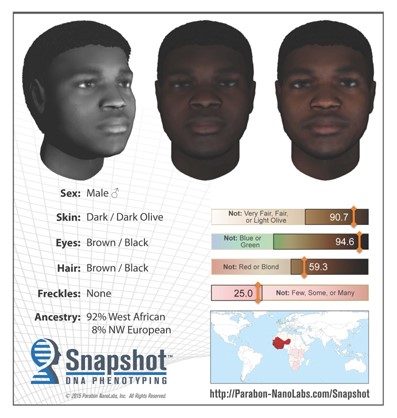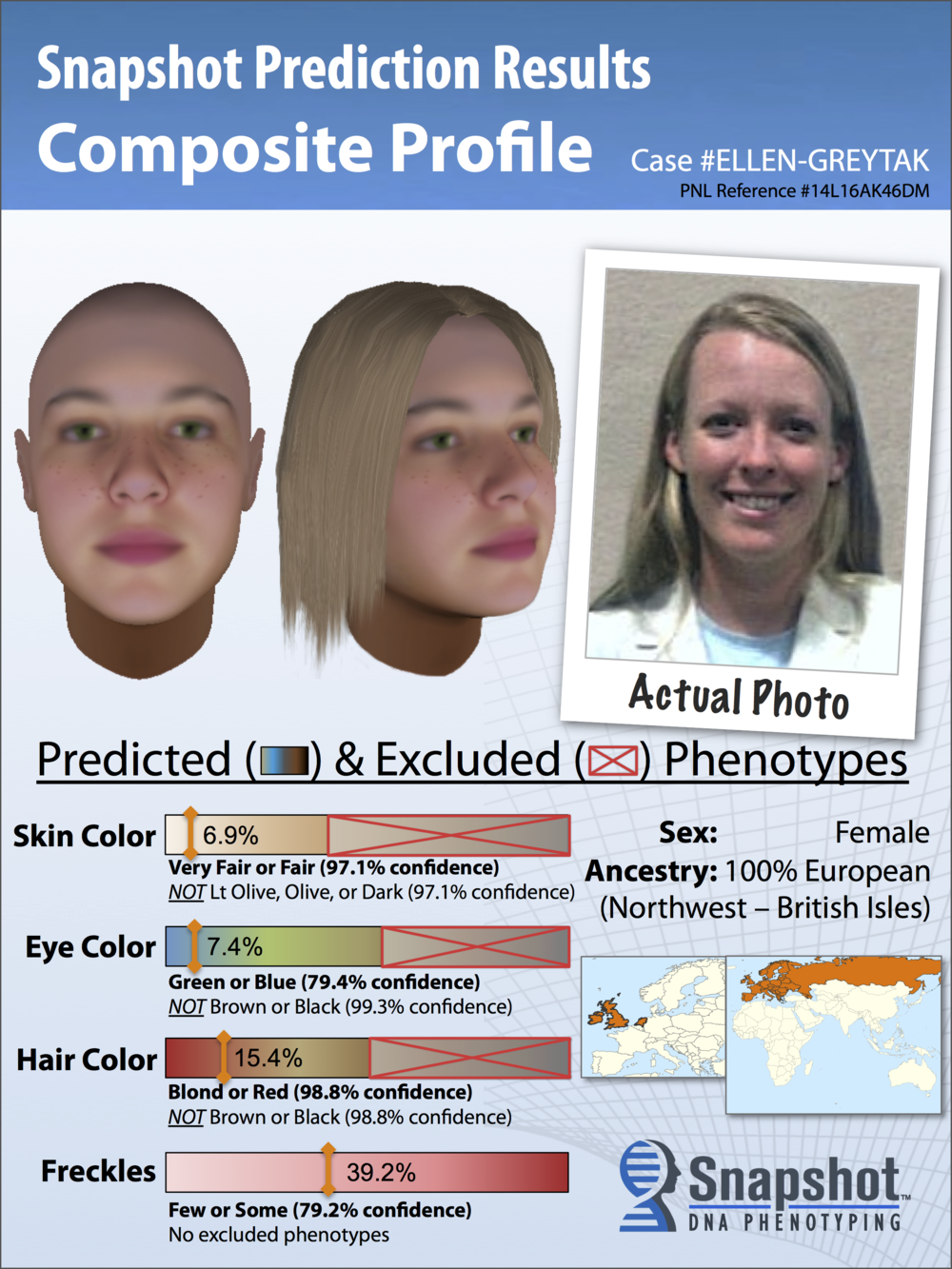Forensic DNA Phenotyped Facial Imaging
/ On January 9, 2011, in Columbia, South Carolina, Candra Alston and her three year-old daughter Malaysia Boykin were brutally murdered. When no one heard from them in over three days, Candra’s father went in search of his daughter and granddaughter and discovered their bodies inside their own apartment. A computer, an expensive designer purse, and some children’s clothing were the only missing items. There was no sign of forced entry, leading the police to believe that Candra had known her assailant. There were no eyewitnesses to the crime and very little evidence was recovered from the scene. Police have released few details about the crime regarding the types of evidence or even the method of death beyond describing it as an “extraordinarily violent manner”.
On January 9, 2011, in Columbia, South Carolina, Candra Alston and her three year-old daughter Malaysia Boykin were brutally murdered. When no one heard from them in over three days, Candra’s father went in search of his daughter and granddaughter and discovered their bodies inside their own apartment. A computer, an expensive designer purse, and some children’s clothing were the only missing items. There was no sign of forced entry, leading the police to believe that Candra had known her assailant. There were no eyewitnesses to the crime and very little evidence was recovered from the scene. Police have released few details about the crime regarding the types of evidence or even the method of death beyond describing it as an “extraordinarily violent manner”.
Candra had a wide circle of ‘in real life’ and virtual friends over several social networks. Columbia police have interviewed hundreds of people from South Carolina and a number of other states. Over one hundred and fifty DNA samples were taken from possible suspects. Unfortunately, not one of the possible suspects has matched DNA recovered from the scene. More than three years after the fact, the case has officially gone cold.
But this past week, the case took an interesting twist. Enter Snapshot, a brand new, cutting-edge technology created by Parabon Nanolabs with funding from the U.S. Department of Defense. Snapshot is a new tool not only for law enforcement, but also for national defense organizations. Dr. Ellen McRae Greytak, the director of bioinformatics at Parabon, likens the technology to a DNA blueprint as opposed to the DNA fingerprint of typical sequencing.
Snapshot analyzes the DNA of a given sample, looking specifically at known gene sequences that affect our appearance, and then compares those specific sequences against a database of 10,000 subjects of known appearance. From these complex algorithms, Snapshot is able to produce a virtual likeness of an individual based on their DNA in a process called ‘forensic DNA phenotyping’. It not only predicts ancestry (even if mixed), but skin, hair and eye colour, face shape, and even the expected amount of freckling. The picture above was released only a few days ago by the Columbia, South Carolina police, revealing a potential representation of the suspect in the Alston/Boykin slayings. This is truly groundbreaking technology.
 Currently, Texas is the only state to allow forensic DNA phenotyping. As often happens, acceptance of groundbreaking technology comes with skepticism and caveats. Foremost is how accurate the results are if this type of evidence is being used in criminal cases. The image to the right shows an example of one of the database subjects, both the virtual prediction based on the analysis of her DNA and her actual picture. While not exact, it’s a fair representation of the subject, enough in a criminal investigation to delve deeper with established gold standard techniques like DNA profiling.
Currently, Texas is the only state to allow forensic DNA phenotyping. As often happens, acceptance of groundbreaking technology comes with skepticism and caveats. Foremost is how accurate the results are if this type of evidence is being used in criminal cases. The image to the right shows an example of one of the database subjects, both the virtual prediction based on the analysis of her DNA and her actual picture. While not exact, it’s a fair representation of the subject, enough in a criminal investigation to delve deeper with established gold standard techniques like DNA profiling.
Where Snapshot is at it’s most useful is through exclusion. Looking at the same image to the right, you can see that it has the highest statistical confidence in excluding the groups the subject does not belong to. Even if the system does not give a 100% accurate estimate of the suspect, just knowing who he/she is not still gives law enforcement an immense investigative lead by narrowing the suspect list and allowing investigators to concentrate on more likely individuals. Imagine a killer leaves skin cells under his victim’s nails during an attack. Given a set of exclusions, it might be determined that the killer was a male of Southern European decent with olive skin, black hair, and brown eyes. This kind of information would progress a case by leaps and bounds in the absense of an eyewitness to the event.
The virtual estimation of the man above was released by the Columbia police in hopes it would generate additional leads. Time will tell, but with a little luck, maybe Candra and Malaysia will find justice after all.
Photo credit: Parabon Nanolabs and the City of Columbia, SC Police Department
We're coming to the end of our giveaways and only have a few copies left. Don't miss out on one of your last chances to get the new paperback version of DEAD, WITHOUT A STONE TO TELL IT or an advanced copy of TWO PARTS BLOODY MURDER. Enter now!
Goodreads Book Giveaway
Dead, Without a Stone to Tell It
by Jen J. Danna
Giveaway ends January 31, 2015.
See the giveaway details at Goodreads.
Goodreads Book Giveaway
Two Parts Bloody Murder
by Jen J. Danna
Giveaway ends January 31, 2015.
See the giveaway details at Goodreads.





 90.0%
90.0% Planning
Planning